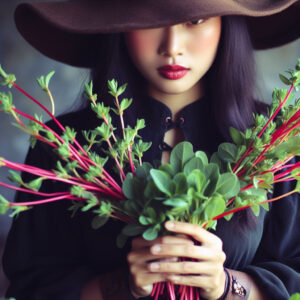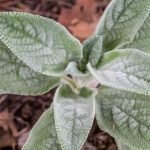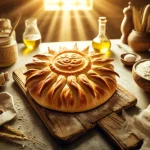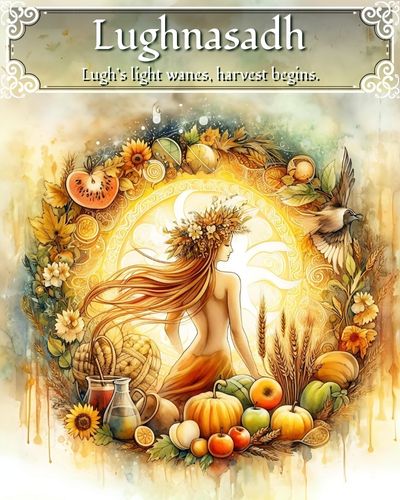
Approx. Reading time: About 5 Minutes

Foraging Plantains!
Plantains are a type of weed commonly found in many parts of the world. Despite their reputation as a nuisance plant, they are edible and nutritious, making them an excellent food source for those who know how to forage them. Foraging for plantains is a simple and rewarding activity that requires only a basic knowledge of plant identification and some patience.
In this article, we will explore the benefits of foraging for plantains, how to identify them, where they grow, and common uses. Whether you’re a seasoned forager or new to the practice, learning how to identify and harvest plantains can be a valuable addition to your knowledge of wild foods.

What Does Plantain Look Like – How to Identify Two Species of this Practical Plant?
This claimed weed is common where all plants grow. Simply step outside and look around, it’s likely there’s one of these plants’ variants growing among the others. The nutritional punch it packs plus its natural medical properties’ surprises most and changes the way people look at these weeds. Let’s clear up a confusion, although Plantain plants share the same name as the banana-like fruit these two plants are completely different. The plantain falls under the Plantaginaceae family of which there are 34 plants readily available around the world, all of them edible.
 So, what does a plantain look like? The two most common types of plantains you might find are: broadleaf plantain (Plantago major, image right) and narrow-leaf plantain (Plantago lanceolata, image above). Both types of plantains are herbaceous, flowering plants with leaves that grow in a rosette formation. Plantains are perennials plants with sturdy leaves that grow in the same areas year after year.
So, what does a plantain look like? The two most common types of plantains you might find are: broadleaf plantain (Plantago major, image right) and narrow-leaf plantain (Plantago lanceolata, image above). Both types of plantains are herbaceous, flowering plants with leaves that grow in a rosette formation. Plantains are perennials plants with sturdy leaves that grow in the same areas year after year.
Where do plantains grow?
Pretty much everywhere that humans live there are plantains. It’s often classified as an invasive weed, although with time it could be more commonly known as a wild edible source of importance.
This plant is very resilient and found growing in areas with compacted soil such as sidewalks, bustling streets, and all-round cities. It’s easily spotted along riverbanks, in farmland, and grasslands, and seems to thrive in all areas that have a human disturbance.
What does broadleaf plantain (Plantago major) look like?

One defining characteristic of broadleaf plantains is their fibrous nature. Try gently pulling a plantain leaf from its stem. You will see sinewy strings still attached. Because of this, plantain fibers were used to make twine and woven to create other practical household items.
What does narrow-leaf plantain (Plantago lanceolata) look like?

As the name implies, narrow-leaf plantain leaves are narrower and longer than their broad-leafed cousin. At first glance, they look like long thick blades of grass. The narrow-leaf plantain has deep veins running lengthwise. When you look closer, you’ll see smaller veins running in all different directions.
It also has tall stalks with clustered, small green/brown flowers. Flower stems generally grow between 10–40 cm (3.9–15.7 inches).
An abundance of seeds
One of the reasons why plantains are so plentiful is that they produce a lot of seeds. Each plant can produce up to 14,000 seeds each year! The seeds may remain viable for up to 60 years. Seeds are dispersed by the wind, animals, and humans.
The seeds of plantains are also edible. To eat the seeds fresh from the plant, place a stalk between your teeth and gently scrape out the seeds.
Plantain seeds can also be ground up or dried for use in recipes for breads and salads. They have a slightly nutty, full-bodied flavor which lends itself nicely to certain recipes.
When young and without flowers, broadleaf plantains are sometimes confused with plants of the Lily family which are not edible. Once flowers appear, it’s easier to distinguish between the two.
If you’re having trouble identifying a plant, ask a local specialist.
Common natural home remedies and uses of plantain
One of the easiest and most common uses of plantain leaves is as a soothing agent for insect bites, bee stings and minor cuts. Make a saliva-based poultice by chewing up leaves in your mouth and applying to the wounded area. Cover with a bandage.
Have a cough or cold? Brew plantain leaf tea. Sweeten with a dollop of honey. Plantain acts as an expectorant, helping to clear mucus from the body when you’re sick.
If you need help with bowel movements, plantain seeds act as a laxative.
Get a boost of vitamins A, C, and E along with magnesium and calcium. Incorporate fresh plantain leaves into salads, or make a green smoothie. Plantain leaves can also be pan-fried and used in stir-fry recipes.
Foraging tips
If you’re planning on foraging some wild plantain, here are a few tips:
Make sure plantains are growing in an area free of herbicides and pesticides. The best place to start foraging is in your own backyard assuming it’s chemical-free. Avoid plantains that look shriveled or discolored—a sure sign they’ve been chemically treated. A good general rule is to stay several meters away from roadsides and commercial properties.
Harvest plantain leaves by simply pulling gently to remove from the plant. The leaves come off easily while the root remains in the earth for re-growth. While plantains are resilient and grow readily, it’s always a good idea to leave some for next time, or for others.
You might need to bring a pair of scissors (just in case), to separate the leaves from the plant. Young plants have fibrous, thick stems that can be difficult to pluck.
Rinse plantain leaves in a colander and pat dry. You can refrigerate fresh leaves for several days, but it’s best to use them while fresh. To preserve leaves, try drying them.
Conclusion
While it’s annoying to have plantains popping up all over your yard, they’re a bountiful source of nutrients with powerful medicinal properties. Instead of fighting nature by spraying herbicides on them, try harvesting these natural wonders. You might find yourself a bit healthier and happier.
Disclaimer: Foraging for wild food can be a rewarding and enjoyable activity, but it can also be dangerous. It is important to note that not all plants are safe to eat and misidentification of plants can lead to serious illness or even death. Additionally, wild food can be contaminated with pollutants or harmful substances, which can also pose health risks. Therefore, it is crucial to exercise caution and proper research before consuming any wild food. It is recommended to learn from experienced foragers or take a foraging class before attempting to forage on your own. Always properly identify the plant and verify with multiple reliable sources before consuming. If you have any doubts, it is best to err on the side of caution and avoid consuming the plant.














